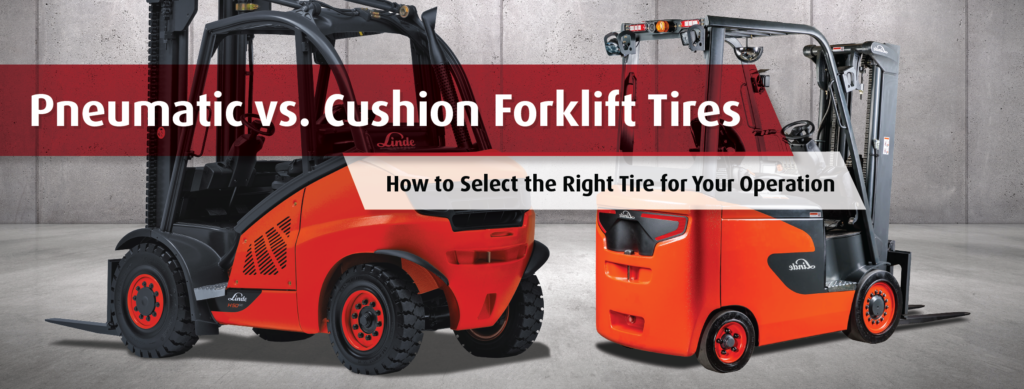|
Matthai Blog Wednesday, November 02 2022
When selecting a forklift for your operation, there are many options to consider before finally deciding on the right equipment for the job. While ensuring the truck you choose matches your environment and can handle the proper capacity limits, choosing the right tires for your forklift is also essential. Different applications require different forklift tires, and it is imperative to select the right kind of tires because it will affect the overall handling and welfare of the forklift. Pneumatic Forklift Tires Pneumatic tires are more commonly used on:
Types of Pneumatic Tires There are two different types of pneumatic tires, solid pneumatics, and air pneumatics. Depending on the environment that your truck will work, knowing the difference between the two tire options will help you make the best decision for your operation.
Pneumatic tires provide a smoother ride for operators as the air-filled tire can provide a bit of bounce when navigating over rough terrain. Cushion Forklift Tires
Cushion forklift tires can’t withstand as much weight as pneumatic tires can but can function in smaller capacities. This ability makes them an attractive option for facilities with less space as their smaller turning radius provides an advantage compared to pneumatic tires. How to Decide Between Pneumatic and Cushion Tires
Consider that the work environment will play a heavy role in making the ultimate decision on tire options. Both cushion and pneumatic tire forklifts can be acquired in any load capacity, ranging from less than 2,000 pounds to more than 200,000 pounds. If you are still having trouble deciding, we are more than happy to offer solutions for your specific situation. At Matthai Material Handling, we understand the importance of choosing the best tire for your forklift to enhance the capabilities of your operation. We know what matters to your operation and how the smallest detail can enhance or detract from your organization. Just give us a call at 410-344-1801 for a consultation and quote. |






